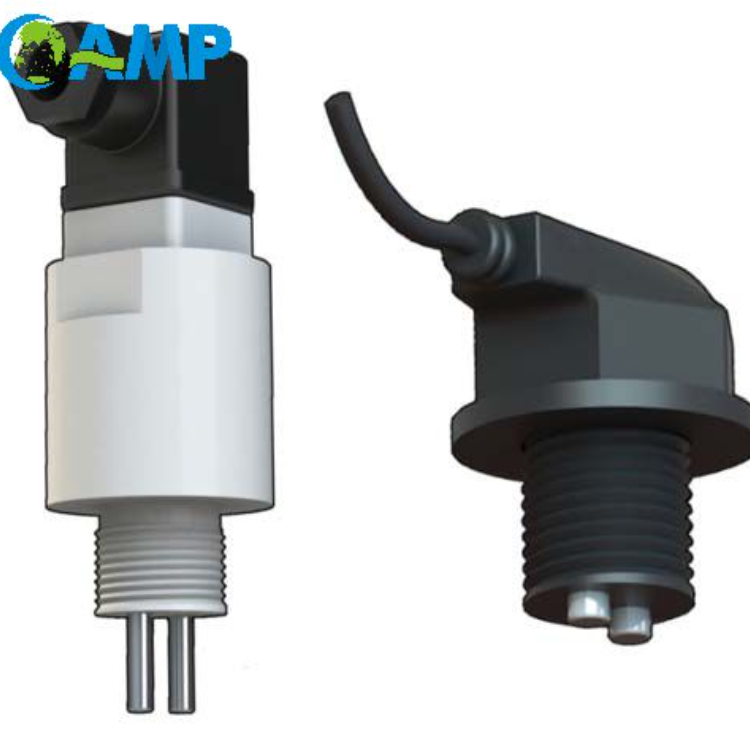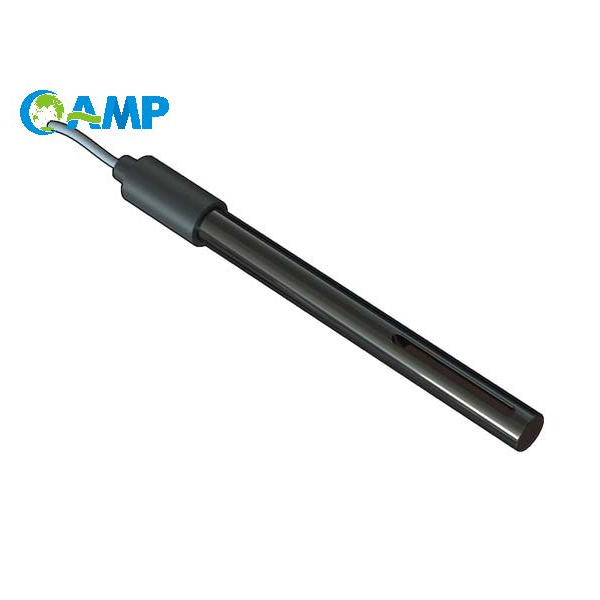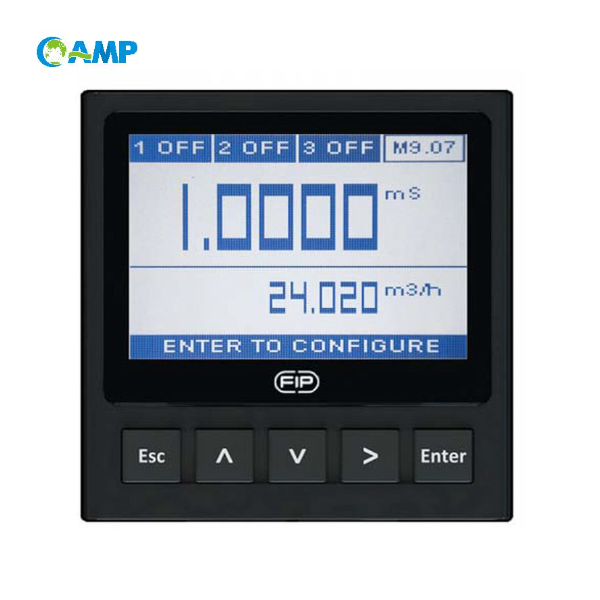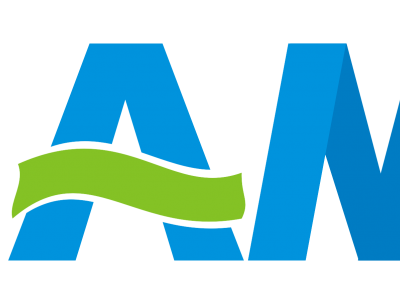-
 Chen Si
Hi there! Welcome to my shop. Let me know if you have any questions.
Chen Si
Hi there! Welcome to my shop. Let me know if you have any questions.
Your message has exceeded the limit.

Exploring Conductivity Sensors and Their Role in Modern Industries
2025-10-13 13:34:22
Conductivity sensors represent an essential but somewhat underrated aspect of many contemporary industries. They are used in environmental applications for assessing water and optimizing chemical processes in manufacturing, serving as an important tool to ensure efficiency, safety, and accuracy. However, what are these devices and what makes them so important in the world we are living in where technology is changing our lives in unprecedented ways? This blog article explores the aspect of conductivity sensors, explaining their modes of operation, the fields where they are applicable, and their contribution to the development of specific areas of activity. Whether you are a technology connoisseur, an expert in the field, or just someone who is curious about the principles governing the innovations in their day-to-day lives, the article shall remain unbeatable as it elucidates these, plus the effect of the conductivity Sensor on the new age technology.
Introduction to Conductivity Sensors
Conductivity sensors do not make headlines; however, they remain an integral component of modern industries. Be it ensuring water quality at treatment plants or fine-tuning chemical processes in manufacturing, these devices serve the singular purpose of measuring and amplifying the efficiency in such diverse areas. This blog seeks to reveal the theoretical laws behind conductivity sensors and how they operate, as well as provide insight into the vast range of applications where they are useful. Whether you consider these sensors from the perspective of public health protection or technological progress, this article will demonstrate why conduction sensors are second to none in a world where precision and innovation reign.
General Conductivity Measurement
The working principle of conductivity measurement is based on electrical conductivity, i.e., the solution's ability to allow electricity to pass through it. This ability is because of ions dissolved in the water such as salts, acids, and bases. The more ions present, the greater the conductivity. The conductivity instrument sets a certain voltage potential across two electrodes dipped in the medium and then measures the electric current that flows between these electrodes; the current value is proportional to the conductivity of the solution.
Conductivity is generally measured in units of microsiemens per centimeter (µS/cm) or millisiemens per centimeter (mS/cm), depending on the type of application. For example, conductivity values for ultra-pure water used in industrial or pharmaceutical applications lie within the range of 0.05–0.10 µS/cm, whereas seawater shows conductivity values in the range of 50,000 µS/cm.
In the pharmaceutical world, they also utilize these sensors to test water purities for injection (WFI). This is done mostly to comply with stringent regulations set forth by bodies such as the United States Pharmacopeia (USP). Changes being made in sensor design are granting greater degree of precision and real-time monitoring of data, much needed in industries that emphasize on accuracy and speed.
Importance in Key Industries
With new developments in conductivity sensor technology, the importance of these sensors in various industries has only increased. Industry reports state that the global conductivity sensor market is expected to reach a valuation of $1.5 billion by 2028, fueled mainly by its usage in water treatment, in food and beverage production, and in pharmaceutical manufacturing. Now, these sensors are being equipped with more advanced capabilities, such as digital communication protocols like Modbus and HART, which enable wireless connectivity for remote monitoring and control.
So, conductivity sensors are used in water treatment to ensure water quality is maintained according to the standards; for example, Total Dissolved Solids (TDS) must not be more than 500 ppm as per EPA standards for drinking water. Likewise, in food and beverages, these instruments can assist manufacturers in fine-tuning processes such as pasteurization and CIP (clean-in-place) cycles by measuring fluid conductivity with precision to safeguard products.
Gleaning data in real time and then analyzing it in the cloud is one of the major reasons behind improved efficiencies created by these industries. With the help of predictive maintenance in place, the industries thus predict when a sensor would fail, so they can avoid downtime and decrease operational cost. The increase in accuracy and the increased automation are critical as industries strive to be sustainable and lean. It all allows for tighter resource control and less waste.
Types of Conductivity Sensors

Conductivity sensors are often divided into two major categories based on the measurement principle: contact and inductive. Contact sensors measure conductivities directly with electrodes and are generally used in low conductivity applications, whereas the inductive sensors are used in high conductivity environments. The latter have greater resistance to fouling or coating and can produce readings even in adverse conditions.
Contacting Conductivity Sensors
A method to evaluate the conductivity of a solution mainly involves conductivity sensors with electrodes. These sensors usually consist of two or, occasionally, four electrodes that come in direct contact with the liquid. The electrical current passing determines conductivity through the solution between the electrodes to which a voltage has been applied.
They are highly sensitive contacting conductivity sensors and are used in applications where conductivity is low, such as ultrapure water monitoring in industries like pharmaceuticals, microelectronics, or power generation, wherein the parameter must be measured with accuracy to assess water quality and safety and comply with regulatory standards.
Key Advantages
High Accuracy: Suitable for measurements where the conductivity is expected to be low due to the design.
Compact Design: These sensors are small and efficient and thus they can be easily integrated into various systems.
Range of application: From pure water systems to boiler plants, cooling towers, and chemical processes.
Limitations
Tendency to Fouling: Because it is in direct contact with the liquid, the electrodes can accumulate film deposits that from time to time must be cleaned.
Less High Conductivity Setting: In areas of very high conductivity, they are less effective due to saturation or polarization at the electrode level.
Example Data for Contacting Conductivity Instruments
Measuring Range: 0.01 μS/cm to 10 mS/cm
Precision: 0.5% of full scale
Temperature Compensation: Automatic from 0° to 100°C (or greater upon the model of the sensor)
Materials: Stainless steel, titanium, or platinum, depending upon chemical compatibility considerations.
Areas of Use for Contacting Conductivity Sensors
Pharmaceutical Industry: Monitor ultrapure water (usually
Power Generation: For monitoring boiler water and high-purity feed water quality to prevent scaling and corrosion.
Food & Beverage Industry: Cleaning and sanitation procedures (i.e., CIP) are being controlled to ensure consistent production quality.
Some factors to consider when selecting a conductivity sensor include the chemical composition of the solution, operating temperature, and maintenance requirements for optimal operation.
Inductive Electronics Conductance Sensors
Inductive conductivity sensors are excellent for working within aggressive or high-fouling environments. Inductive conductivity sensors are contrary to contacting conductivity sensors-that do require direct contact with the liquid under treatment-and hence are highly durable and resistant to contamination, scaling, or corrosion. Essentially, these sensors operate by creating an inductive field within a coil; this field interacts with the ions in the given solution to induce a current whose magnitude depends on the solution's conductivity level.
Key Features and Advantages:
Non-Contact Sensing: Ensures long sensor life even in highly incompatible media or abrasive components, such as highly acidic or alkaline solutions, emulsions, or slurries.
Wide Measuring Range: Usually with the capability to measure conductivity from 0.5 μS/cm to 2000 mS/cm, therefore, they are used in diverse applications.
Less Maintenance: Low probabilities of fouling or clogging mean much less cleaning and maintenance, making it cheaper to run in the long term.
Temperature Compensation: Temperature changes are compensated for by the built-in sensor systems to ensure precise results.
Applications for Inductive Conductivity Sensors:
Chemical Processing: Monitor concentrations of caustics and acids on an industrial scale.
Pulp and Paper: Measure conductivity of black liquor for process optimization.
Water Treatment: Analyze highly saline or wastewater streams efficiently.
Food and Beverage: Measure conductivity during cleaning in place (CIP) processes to verify cleaning efficacy and to prevent sensor contamination.
However, recent research has placed inductive conductivity sensors among the most reliable systems when placed in environments containing high amounts of total dissolved solids (TDS). For example, wastewater plants have used these sensors with a measurement accuracy of up to ±2% in conductivity ranges greater than 150 mS/cm, achieving at least several years of continuous operation with very low maintenance.
Applications of Conductivity Sensors
Conductivity sensors are employed toward a variety of applications, such as water quality monitoring, chemical processing, and industrial automation. Because of this, each domain faces challenges in operational efficiency, product quality, and damage to environmental standards depending on the industry involved.
Water Treatment and Purity Monitoring
When measuring water's ability to conduct an electrical current, conductivity sensors provide a crucial role in water treatment and purity monitoring. That ability equals the amount of dissolved ions, which stands for purity. Measuring ultrapure water can be tricky due to its low conductivity levels. According to recent reports, ultrapure water generally has a conductivity below 0.1 µS/cm and is used in industries, with semiconductor manufacturing being one of them. On the other hand, pure drinking water generally has levels between 50 and 500 µS/cm, varying depending on mineral content and local standards.
An advanced conductivity-type sensor, combined with a real-time monitoring system, is Ireland's way of stressing the scenario in desalination plants where salts and impurities must be removed to a highly demanding threshold level. For example, the contemporary reverse osmosis systems require sharp conductivity measurements to together observe any compromises to the membrane, aimed at ensuring a steady output quality.
In addition, these sensors also find their application in municipal water treatment plants. Monitoring conductivity changes can reveal if there is contamination or negligence in the exercise of the equipment. Based on global water standards, the set conductivity levels must ensure the availability of safe and clean water for people around the world.
Chemical Processing and Concentration Control
Conductivity sensors are important tools for chemical processing industries and are used for monitoring and regulating solution concentrations. Because these sensors measure the ionic content of a liquid, they can control chemical reactions accurately, thus ensuring product quality and safe operating conditions. Advances in conductivity technology, such as inductive sensors, have enabled greater reliability in highly conductive or corrosive chemical environments, thereby reducing costly downtime and maintenance.
Conductivity measurements are employed to maintain consistent concentration levels in solutions, such as sulfuric acid, which are transmitted to industrial manufacturing processes. Referring to updated data from 2023, it is predicted that the global chemical processing sector will grow at a CAGR of 4.3% over the next five years, with advanced sensor technologies playing a major role in driving efficiency and sustainability.
Conductivity data can be utilized by industries for the optimization of resource usage, by means of real-time monitorization systems, and thus waste reduction and compliance with environmental regulations occur. This leads to a higher level of operational efficiency, also favoring global sustainability objectives such as reducing the carbon footprint in industrial operations.
Quality Control in Food and Beverage
The food and beverage industries are ever more dependent on conductivity sensors and advanced technology for quality and safety measurement. Conductivity measurements pertain to ingredient concentration amounts, the presence of impurities, or cleanliness checks on a process prior to or during production. By 2028, the global food and beverage processing market is expected to reach a valuation of $100 billion, with growth aided by technological innovations such as smart sensors.
Layman language for: Real-time conductivity monitoring allows manufacturers to enhance efficiency in CIP, limit water usage, and reduce chemicals by up to 70%. Hence, this reduces operational costs and supports environmental sustainability, a key focus area in today's global industry. Also, stringent food safety-related regulations have you. S. FDA, global standards such as ISO 22000 are, in actuality, what widened the act of employing precision instruments for ensuring compliance with the regulations, thereby maintaining consumer trust.
By employing cutting-edge sensor technologies, food and beverage companies find a way to balance production demands with product safety and sustainability practices.
Pharmaceutical Compliance Monitoring
The pharmaceutical industry is encumbered by stringent regulatory frameworks under which their drugs are to be ensured for safety, efficacy, and quality by establishments like the FDA, EMA, and WHO. Compliance monitoring is highly intensive tracking and documenting of processes so that these standards are met. The global pharmaceutical quality management market was announced in 2023 to be expected to reach $12.54 billion by 2030, driven by increased demand for compliance solutions.
Such advanced technologies as IoT devices and machine learning have become highly instrumental in mitigating problems related to compliance monitoring. Storage conditions can be monitored in real time using IoT-enabled sensors for parameters like temperature and humidity, which are critical to drug integrity. For instance, pharmaceutical companies use temperature data loggers to ensure that vaccines never exceed the temperature ranges of 2°C to 8°C, preventing spoilage.
Trends and events are being analyzed, which could bring deviations into the manufacturing process, using data analytics tools. Draconian preventive measures are better than taking chances of cure; thereby, an issue could be worked on even before it arises, constantly adding to compliance on one's side against costly penalties. As newer regulations come into place, the importance of having an innovative set-up to keep the stash traceable and valuable increases, providing customers with a Bronze Standard for Pharmaceutical goods.
Power Plants and Boiler Water Monitoring
Water quality in boilers is of paramount importance for the efficient operation of power plants. Poor quality water in boilers causes scaling and corrosion, thereby affecting heat transfer efficiencies, performance, and operational costs all over a period. Modern power plants are fitted with state-of-art boiler water monitoring systems that keep on checking the water chemistry through real-time data analysis to confirm that the parameter lies within accepted ranges.
According to recent studies, improper boiler water treatment is responsible for up to 50% of unscheduled shutdowns of power plants, thus emphasizing the economic role that monitoring plays. It is becoming ever more crucial for systems to be equipped with pH sensors, conductivity meters, and turbidity analyzers. These instruments serve to detect impurities, dissolved solids, and changes that may otherwise cause trouble if allowed. For example, allowing the boiler feedwater to vary in pH from 9.5 to 11 will prevent corrosion of metal parts and, in turn, ensure the longevity of the equipment.
With IoT-enabled monitoring solutions, plant operators can receive continuous data remotely, thus minimizing manual sampling and allowing for predictive maintenance. By leveraging innovations alongside accepted modern practices, power plants can better optimize their performance, reduce downtime, and remain compliant with environmental standards more efficiently.
Benefits of Using Conductivity Sensors

Conductivity sensors offer precise measurement for the operational efficiency of the systems and plants: assurance that products made will have the best quality possible. They are very easy to use and maintain; thus, quick decisions can be taken from real-time data, which further help in optimizing various processes in different industries.
Enhanced Process Efficiency
The global conductivity sensors market is projected to reach $743 million by 2027, growing at a CAGR of about 6.9% from 2022 to 2027. Several factors behind this growth include developments in automation technologies and a rise in demand across numerous industries, such as wastewater management, food and beverage production, and pharmaceuticals.
Increased requirements for precise and reliable monitoring to satisfy regulations are key contributors to this growth. Modern data points to a significant growth in the adoption of smart conductivity sensors due to their ability to perform real-time monitoring, minimize energy consumption, and reduce resource use.
Conductivity sensors, meanwhile, have provided beneficial updates to the wastewater treatment process that further allow industries to comply with environmental regulations and prevent environmental degradation. Besides, these sensors are also being applied in food and beverage industries for quality control purposes, thus ensuring safety without affecting efficiency.
On the regional front, the Asia-Pacific market will dominate due to rapid industrialization and infrastructure building. Europe and North America are carrying out further automation efforts, thereby contributing to the demand at the global level. Conductivity sensors, on the whole, remain a crucial technology that exerts innovative effects by fulfilling sustainability goals and enhancing operational efficiency.
Cost Savings Through Optimization
Electrolytic conductivity sensors effectively reduce operational expenses for industrial sectors by improving processes and eliminating wastage of certain resources. Recent reports have stated that the conductivity sensors market shall record a CAGR of almost 6.5% till 2030, starting from 2023, mainly due to the increased demand from water treatment, chemical processing, and food & beverage industries. The conductivity sensors assist in close monitoring and controlling of the concentrations of liquids, thereby reducing the consumption of energy and chemicals to a very great extent.
For instance, the installation of conductivity sensors in water treatment plants brought the wastage of treated waters down by 30% while adhering to onerous environmental regulations. Similarly, the sensors in the food & beverage industries optimize the cleaning-in-place (CIP) processes to reduce the cleaning times and save up to 20% of water and detergent cost. IoT-enabled sensors, in tandem with Industry 4.0 initiatives, facilitate real-time data analysis, leading to predictive maintenance that further shrinks downtime and boosts productivity.
These sensor technologies, which include advanced conductivity sensors, reduce resource use and lessen environmental impacts while simultaneously streamlining operations, making them a must-have for industries today.
Future Trends in Conductivity Measurement
When it comes to conductivity sensors, I focus on factors like whether the range is sufficient, material durability, compatibility with my system, and ease of maintenance. I prefer models that offer a trade-off between accuracy and cost-effective operation.
Technological Advancements in Sensors
Recent advances in conductivity sensor technology address matters of accuracy, reduction in maintenance, and compatibility with modern industrial systems. For example, it is a growing trend for companies to integrate smart sensor features, such as automatic temperature compensation and built-in diagnostics, to ensure consistent performance across varying conditions.
One notable trend is the conceptualization and subsequent manufacturing of non-contacting inductive conductivity sensors. Unlike normal contacting ones, these sensors are among the most resistant to fouling and corrosion, making them ideal for harsh operating environments, such as those in chemical processing or wastewater management. Also, according to Markets and Markets, between 2023 and 2028, the global market for conductivity sensors would further increase at CAGR 6.8%, primarily driven by demand in water treatment and industrial automation.
Furthermore, manufacturers use state-of-the-art materials like advanced ceramics and titanium to enhance sensor durability and lifespan. Western-style instrumentation meters also grew; hence, conductivity meters now allow communication to the cloud and enable real-time remote monitoring and data analytics, ensuring quicker decision-making and process optimization.
These advancements highlight the role of conductivity sensors in present-day industries, which continue to meet application demands while maintaining sustainability goals.
Integration with IoT Systems
The integration of conductivity sensors with IoT systems is changing industries, allowing for monitoring, analyzing, and automating without any deterrent. According to research, the global IoT market for industrial applications is estimated to reach $1.1 trillion by 2028, projecting an increase in demand for connected devices and smart monitoring solutions, respectively. With such an abundance of connected solutions, conductivity sensors are instrumental in providing endless streams of real-time data that get sent to cloud platforms, where advanced analytics can provide actionable insights.
For instance, in a water treatment plant, conductivity sensors enabled by the IoT can measure and evaluate parameters such as salinity and dissolved solids from a distance to assess water quality. Such practices enhance one's ability to reduce site inspection. Sensor data can be leveraged in predictive maintenance systems that aid in predicting equipment failure, thus minimizing downtime and operational costs. The hybrid of IoT and edge computing technologies provides additional benefits, such as faster data processing and more response time for situations such as chemicals manufacturing or food peak production, wherein every second counts.
Sources also suggest that 75% plus enterprises implementing IoT applications have increased operational efficiencies and improved process transparency. This surely highlights the possibilities of how IoT-integrated conductivity sensors may be used to promote innovation and efficiency in industrial processes while simultaneously encouraging sustainability by way of waste reduction and optimized resource use.
Tags: Conductivity Sensor


